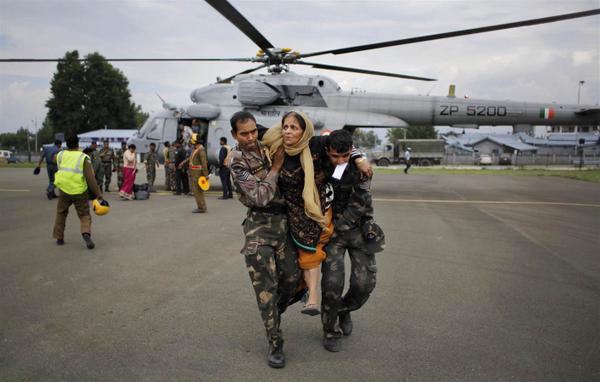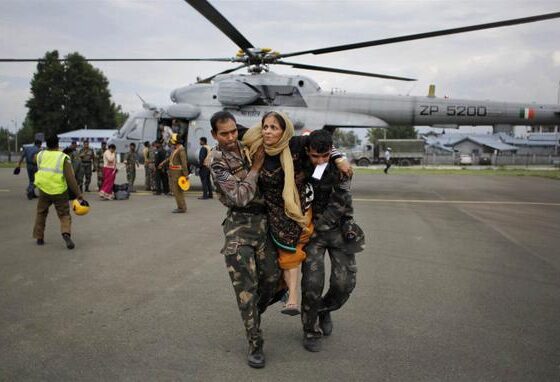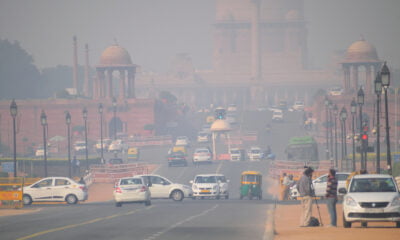

Environment
Hundreds dead as heaviest downpour in 50 years rains down on India and Pakistan
The heavily militarised region of Kashmir, shared by both India and Pakistan, has endured the worst rainfall in 50 years as flash floods took thousands by surprise, with no warning issued by India’s weather office.
[Blue & Green Tomorrow is currently running a crowdfunder to ensure its survival. Please pledge.]
The current death toll stands at 400 people, with thousands still trapped on rooftops. Citizens have expressed criticism against both Indian and Pakistani authorities for the lack of preparation and response to the disaster, regardless of a similar event occurring in 2010.
On the Indian side of the Line of Control, a defensive line between Indian and Pakistani forces, 2,000 villages lay submerged, alongside the city of Srinagar.
Talking to Reuters, a senior official from India’s National Disaster Response Force described the damage as “shocking,” adding, “People have been stranded on the rooftops of their homes for the last three days in some parts of Kashmir.”
Kashmir has been heavily disputed over by both Pakistan and India, with both sides expressing certain legalities regarding the rights of control. The area has subsequently become heavily guarded, with Indian forces regularly operating counter-insurgency operations beyond the border.
Around 47,000 people have already been evacuated, helped in part by the large garrison of soldiers stationed in the area. The Indian Air force has also dropped 550 tonnes of relief material, alongside 80 medical teams operating out of public buildings throughout the affected area.
India’s meteorological department had issued a heavy rain forecast in Kashmir last week, but the Central Water Commission issued no warning and has been heavily criticised by the state.
Pakistan has confirmed 231 people have died as a result of the flooding across the country, including their territory in Kashmir.
The humanitarian crisis is the first newly elected Indian prime minister Narendra Modi has had to deal with, with his own officials confirming that contingency plans were rendered useless by the high levels of rainfall. Some areas saw levels as high as 400 millimetres (15.75 inches) of rain in a day.
Thirty Indians also lost their lives recently to a landslide in the town of Malin after torrential rain brought large pieces of the hillside down on the village earlier last month.
Photo source: NBC Asian America via Twitter
Further Reading:
Indian landslide claims 30 lives with more than 160 still trapped
More than 150 dead in one of India’s worst heatwaves
Wild weather set to get worse because of climate change


 Environment10 months ago
Environment10 months agoAre Polymer Banknotes: an Eco-Friendly Trend or a Groundswell?

 Environment11 months ago
Environment11 months agoEco-Friendly Home Improvements: Top 7 Upgrades for 2025

 Features8 months ago
Features8 months agoEco-Friendly Cryptocurrencies: Sustainable Investment Choices

 Features10 months ago
Features10 months agoEco-Friendly Crypto Traders Must Find the Right Exchange






























